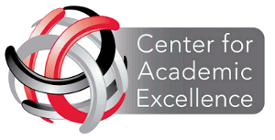Location
Dolan School of Business
Start Date
29-5-2014 1:15 PM
End Date
29-5-2014 2:15 PM
Session Type
Roundtable Discussion
Description
Centers for Teaching and Learning (CTL) have become important arenas of faculty development in teaching and scholarship on many campuses, educating and supporting faculty to become more expert in all aspects of teaching, and to become scholars of teaching and learning. We analyzed our CTL activity to discern how it fits a model for integrated mentoring within a community of practice (Smith, Calderwood, Dohm & Gill Lopez, (2013), the situated context for faculty work and for faculty development activity. The center facilitated dyadic, network and co-mentoring activity across its offerings, infused throughout the 3 conceptual models of faculty work predominant on our campus, with network building and co-mentoring relationships predominating. This study adds the notion of mentoring leadership to Smith et al.’s structural-functional model. Implications for CTL’s are that mentoring within a Community of Practice Framework is appealing and empowering to faculty and professional staff, economically sound and organizationally sustainable.
Topic Designation
Mentoring
Presenter Bio(s)
Patricia Calderwood
Professor of Educational Studies and Teacher Preparation
Fairfield University
Suzanna Klaf
Associate Director of the Center for Academic Excellence
Fairfield University
CTL as Community of Practice for Mentoring: A Case Study
Dolan School of Business
Centers for Teaching and Learning (CTL) have become important arenas of faculty development in teaching and scholarship on many campuses, educating and supporting faculty to become more expert in all aspects of teaching, and to become scholars of teaching and learning. We analyzed our CTL activity to discern how it fits a model for integrated mentoring within a community of practice (Smith, Calderwood, Dohm & Gill Lopez, (2013), the situated context for faculty work and for faculty development activity. The center facilitated dyadic, network and co-mentoring activity across its offerings, infused throughout the 3 conceptual models of faculty work predominant on our campus, with network building and co-mentoring relationships predominating. This study adds the notion of mentoring leadership to Smith et al.’s structural-functional model. Implications for CTL’s are that mentoring within a Community of Practice Framework is appealing and empowering to faculty and professional staff, economically sound and organizationally sustainable.


